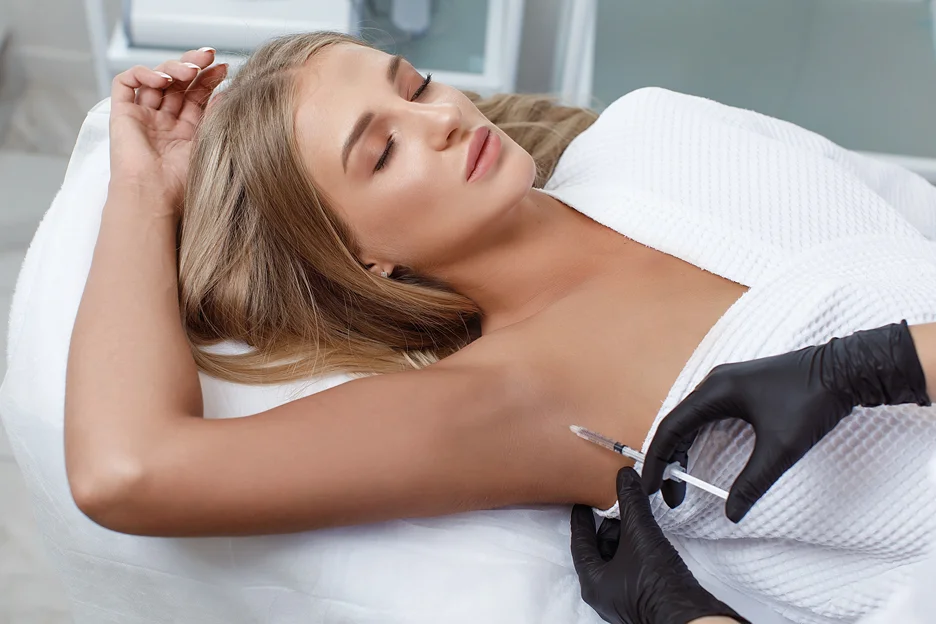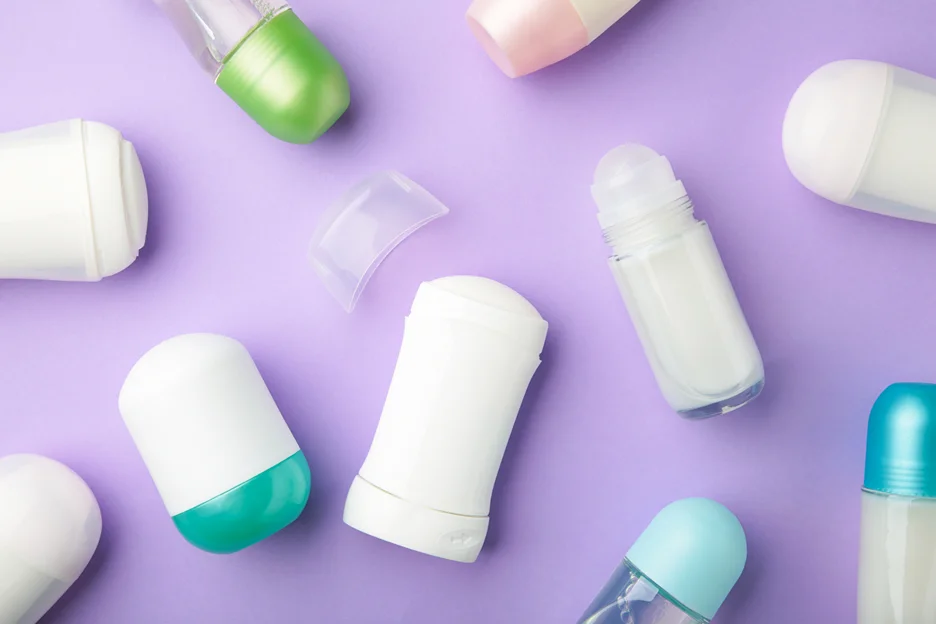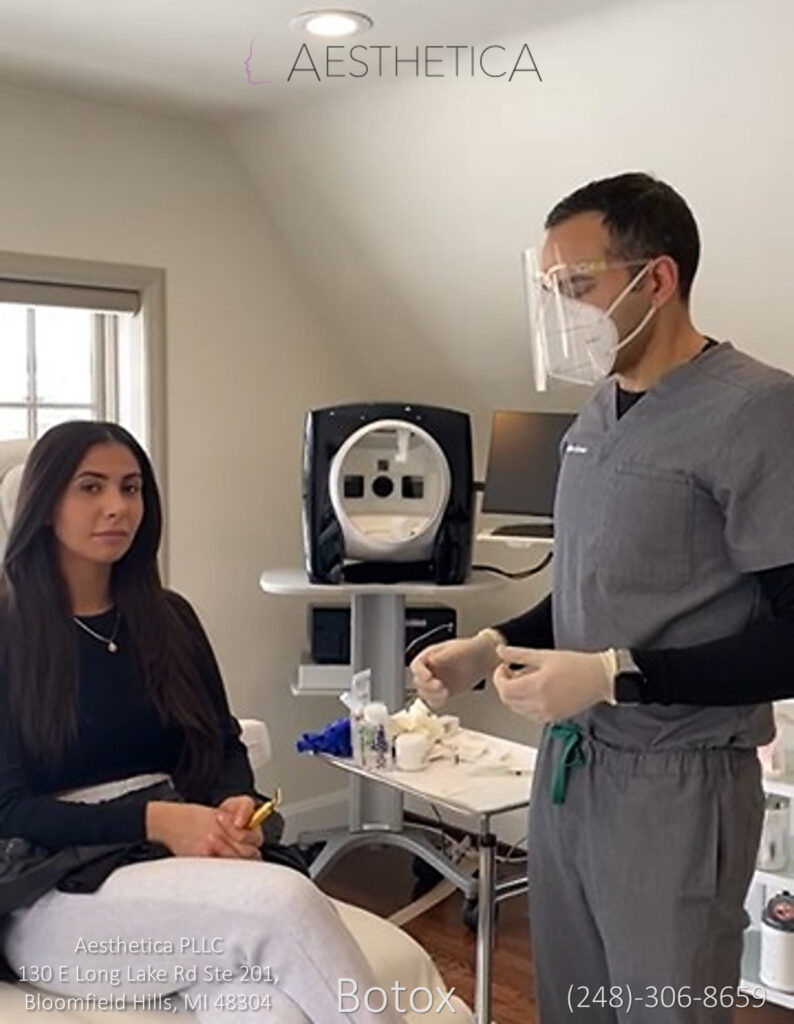
Hyperhidrosis is an excessively high level of sweating that isn't caused by heat or exertion. This type of excessive perspiration can induce social anxiety and shame, in addition to disturbing typical everyday activities. Prescription antiperspirants are typically first recommended, but a more common solution is Botox treatment for sweating.
So how frequently do you need Botox for underarm sweating? You would need to get 50 units of Botox on each underarm every 3 to 6 months on average but can last longer depending on how effective the Botox treatment is for your hyperhidrosis and excessive sweat. In severe circumstances, your doctor may recommend surgery to remove sweat glands or connect the nerves that cause excessive sweating.
Aesthetica can assist you with all your beauty needs, helping you achieve your maximum beauty and aesthetic potential. Call or contact us today to learn more about our cosmetic services.
Botox isn’t a permanent treatment for hyperhidrosis, however, it can last for a decent amount of time. The general average of Botulinum toxin suppressing excessive underarm sweat is reported to be anywhere between 3 to 6 months. However, a single therapy can last anywhere from 4 to 14 months, depending on the patient.
This means that in order to suppress your hyperhidrosis, you will need to return to your Botox physician after 3 to 6 months. Pay attention to your body and stay observant of the potential return of your axillary hyperhidrosis. It’s also possible that symptoms of your hyperhidrosis returned after 4 months of the first treatment, but could return after a longer or shorter period after the next treatment.
Botox treatment for hyperhidrosis is totally personalized, allowing you to get the exact treatment you require for your individual symptoms. Botox injections employ extremely fine needles to deliver the solution to the exact location where it's needed.
Your doctor will apply a topical anesthetic to the Botox injection sites prior to administering the injections, ensuring your comfort and relaxation. Treatment takes less than half an hour, and in some cases, just a few minutes if the treatment region is limited.
Following the procedure, you may experience a little swelling and bruising, as with any injection. There’s no downtime, so you may resume your normal routine immediately following your visit to the office.
You should see benefits within a day or two of finishing your treatment, with maximum results taking roughly a week. The effects of your first treatment can last up to 4 or 5 months, following which you can have it done again to extend the benefits indefinitely. The cost of your treatment might be covered by insurance. To learn more about your specific benefits, our team can contact your provider.
During the operation, most people don’t experience much pain. But if you're having your palms or soles treated for excessive sweating, you may wish to have your skin numbed first. Your doctor may use topical anesthetic, cold, or vibration anesthesia to numb the area.
Botox injections are normally done in the office of a doctor. Botulinum toxin is injected into your skin or muscles with a small needle by your doctor. The number of injections required is determined by a variety of parameters, including the size of the affected area.
Botox injection needles are exceptionally small. This is one of the reasons for the minimum discomfort, as the needles are among the tiniest available. There may be a small lump where the needle was injected into your skin, but it will soon expand into place and look almost normal by the time you're ready to leave the clinic.
You will feel a mild stinging at the injection site while it’s being administered. The use of a topical ointment or an ice pack can help to alleviate this. Don't expect the wrinkles to magically disappear and flatten while this is going on.
Don't be dismayed if you rush out of your visit and into the nearest bathroom hoping to see your 18-year-old face staring back at you. The Botox will affect the nerves in the targeted location over the next few days, up to a few weeks.
There may be some soreness once the topical anesthetic wears off, but no downtime is expected. This is the kind of surgery you can undergo during your lunch break and then return to work. It should just take you 10 to 15 minutes to complete the injectable portion of your session.

Antiperspirants containing aluminum chloride may be prescribed by your doctor. This antiperspirant is more powerful than over-the-counter antiperspirants and is frequently used to treat mild hyperhidrosis.
This method involves submerging yourself in water and using a gadget that delivers low-level electrical currents. The currents are frequently supplied to your hands, feet, or armpits to block your sweat glands momentarily.
Anticholinergic medications can help you stop sweating all over your body. Glycopyrrolate (Robinul) is one of these medications that stops acetylcholine from functioning. Acetylcholine is a substance produced by your body that aids in sweat gland stimulation. These medications take 2 weeks to act and can produce constipation and dizziness as well as other side effects.
Surgery may be able to help you if you simply have sweated in your armpits. The sweat glands in your armpits can be removed as one treatment. An endoscopic thoracic sympathectomy is an additional possibility. The nerves that send messages to your sweat glands are severed in this procedure.
Sweating excessively might be a sign of other, more significant health problems. If you have any of the following symptoms, you should contact your doctor straight away.
Botox can only be administered under the supervision of a physician. In order to avoid side effects, it's critical that injections be properly placed. When Botox is used inappropriately, it might be harmful.
Request a referral from your primary care physician, or seek out a doctor who specializes in your illness and has prior Botox treatment expertise. A professional and fully certified doctor can give you advice on the process and help you decide if it is right for you and your health.
Your doctor will inquire about your sweating, including the frequency and location of it. They will also conduct testing to identify if you have hyperhidrosis, such as blood and urine tests. On the basis of the history and physical examination, most clinicians will diagnose primary hyperhidrosis. Other tests can confirm the diagnosis, but they aren't done on a regular basis.
Iodine is applied to the sweating region during a starch-iodine test. When the iodine has dried, it is dusted with starch. You have excessive sweating if the starch turns dark blue. The sweating region is covered with a special type of paper for a paper test. After absorbing your perspiration, the paper is weighed. You'll sweat excessively if your weight is higher.
A thermoregulatory test may be recommended by your physician. This test uses a particular moisture-sensitive powder, similar to the starch-iodine test. In regions where there is high sweating, the powder changes color. For the test, you could sit in a sauna or a sweat room. If you suffer from hyperhidrosis, your hands are likely to sweat more than they should in the sweat cabinet.

Botulinum toxin injections have been used for cosmetic treatments for years. We at Aesthetica have built up experience with Botox injections and specialize in many types of Botox treatments.
When it comes to the use of a Botox injection for axillary hyperhidrosis, focal hyperhidrosis, secondary hyperhidrosis, or any other type of excessive sweating, we got you covered. Our team at Aesthetica can solve any of your excessive sweat concerns. To explore your Botox treatment options, call us now.
Aesthetica can assist you with all your beauty needs, helping you achieve your maximum beauty and aesthetic potential. Call or contact us today to learn more about our cosmetic services.